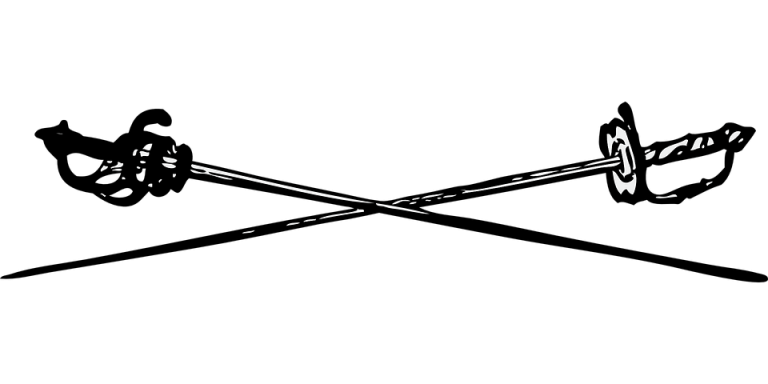Choosing a fencing sword can be a complicated task for many people, since we have a large number of swords to choose from and this can make it a real headache to do this.
The sport of fencing is a centuries-old sport, which has been practiced since the middle Ages. This sport is a sport that mixes skill, strength, responsiveness and above all intelligence, since only a person with enough intelligence will be able to win this game.

Fencing is played with up to 3 different swords, which have some advantages and disadvantages. In addition to that, fencing weapons have different materials, different handles and of course, they can be better or worse depending on the person who is using them.
For this reason, choosing between one of the three weapons can be a life or death decision for those who want to stand out a little in this sport. Fencing is like that, since you really don’t just have to know how to read your opponent and be fast and strong, but also the weapon you choose is key to victory.
In addition to that, the way of fighting changes a bit, since for example with a foil the game is more technical and with the sword it is stronger, with more intensity and explosiveness in it.
Today I am going to teach you everything you need to know about the 3 fencing weapons and which one you should choose for each occasion and whoever you are. In this way, you will be able to become a lethal weapon in this sport and a great practitioner of it, since you will understand one of the greatest bases of fencing, which are its weapons.
Instructions for choosing a fencing sword
- Foil:
This type of sword is the best known of fencing and one of the most representatives. This type of sword is the lightest of all, since it weighs less than 200 grams on many occasions. In addition to that, the foil is a very technical sword, only suitable for experts in this sport. With people who use this type of sword, you should not look so much at strength, but also at technique. The use of this sword is to make headdresses, something that will require great reflexes and, as I said before, a good technique when practicing this sport. Choose the foil if you are a light person, who has a hard time handling weapons that are too big and especially if you are an agile person who already handles the sport of fencing quite well. - Saber:
This kind of weapon is a kind of weapon that goes between the foil and the sword. This is the perfect weapon for some, since it mixes everything good that the foil has and everything that is good about the epee, being a weapon that has a medium weight and medium size. This is the sword that I would recommend to most players, as these players are going to be looking for a sword that is not very robust but is powerful at the same time. The saber not only allows you to make hits, but it is also one of those weapons that allows you to hit, making the duel a little more explosive and aggressive to perform than with the foil and a little faster than with the normal sword. - Sword:
In the case of the sword, we are faced with the heaviest weapon in this sport, a weapon that weighs almost a kilo and whose design is somewhat reminiscent of medieval swords. The fencing sword is robust, complicated to handle, but very powerful. Think that in real life, the sword was the one used as a weapon, so it would be for a reason. This weapon is for strong people, who need a more robust weapon than a foil and saber, since the sword can bring out the best of them. With the sword, fencing matches are more like a medieval sword fight than anything else, being the most fun and favorite combats of many users. - Materials, brands and types:
In addition to having learned to correctly choose the type of sword among these four, you must also learn to choose a quality weapon, looking at its material, brands and types in each case. For example, a sword from a good fencing brand will be stronger, more robust and lighter than a sword from a brand that does not guarantee quality. You also have to look at the grip of the sword, which must adapt to the hand and be able to hold it without there being any risk of cutting or slipping.

















